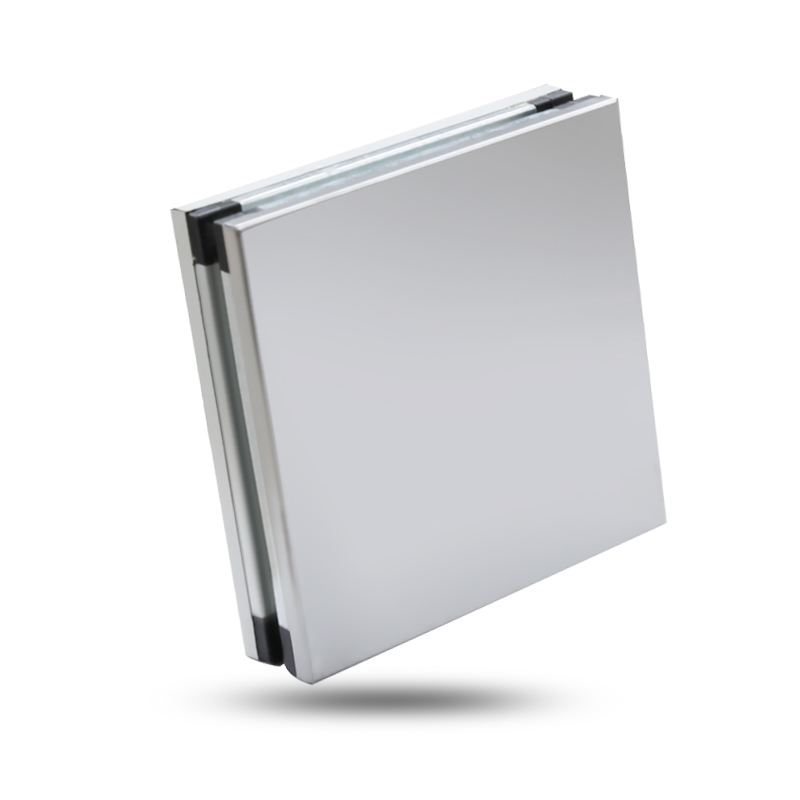

In the world of modern architecture and construction, m […]
In the world of modern architecture and construction, materials that offer both durability and aesthetic appeal are in high demand. One such material that has risen to prominence in recent years is the stainless steel modular panel. Known for its robust characteristics and design flexibility, stainless steel modular panels have become a preferred choice in a wide range of applications, from commercial buildings and residential complexes to industrial facilities and public infrastructure.
Stainless steel modular panels are pre-fabricated panels made from stainless steel, designed to be assembled into larger structures or walls. The term "modular" refers to their ability to be produced in standard sizes that can be easily connected or stacked, offering a high degree of flexibility during installation. These panels are manufactured using stainless steel, an alloy known for its resistance to corrosion, strength, and aesthetic appeal. The panels can be designed to meet specific needs and can be customized with different finishes, textures, and coatings to complement the design of the building.
The modular nature of these panels allows for quick installation and easy scalability. They can be used in a variety of settings, offering a cost-effective alternative to traditional building materials such as brick, wood, or concrete.
One of the primary reasons stainless steel is used in construction is its remarkable durability. Stainless steel is highly resistant to corrosion, rust, and staining, making it an ideal material for environments exposed to moisture, chemicals, or extreme weather conditions. Whether used indoors or outdoors, stainless steel modular panels can withstand wear and tear, ensuring a long lifespan for the structure.
Stainless steel panels offer a sleek, modern appearance that can enhance the visual appeal of any building. The panels can be polished to a mirror-like finish or brushed for a more matte, industrial look. Additionally, the surface can be textured, patterned, or coated to create unique designs that align with the architectural vision. This aesthetic versatility makes stainless steel modular panels suitable for a wide range of projects, from commercial offices to luxury residences.

The modular nature of these panels means they are pre-fabricated in standard sizes and can be easily assembled onsite, reducing the overall time and labor costs of construction. Installation is relatively simple, especially compared to traditional construction methods. Furthermore, stainless steel is easy to clean and maintain, requiring minimal effort to keep it looking new. Regular wiping and occasional cleaning are typically all that is needed to maintain the material’s shine and functionality.
Stainless steel is a highly sustainable material. It is 100% recyclable, and many manufacturers source recycled steel to produce the panels. This reduces the environmental impact of sourcing raw materials and ensures that stainless steel panels contribute to a more sustainable construction process. Additionally, because stainless steel is highly durable, buildings made with these panels require less frequent repairs or replacements, further contributing to their sustainability over time.
Stainless steel is naturally fire-resistant and can withstand high temperatures without warping, melting, or releasing harmful fumes. This makes it an excellent choice for building facades, interior partitions, or any other applications where fire safety is a concern. Stainless steel modular panels can help improve the overall safety of a building while also providing structural integrity.
Stainless steel modular panels are used in a variety of architectural and industrial applications due to their versatility and performance. Some of the most common uses include:
Stainless steel is often used as an exterior cladding material for buildings. Its sleek, modern appearance enhances the visual appeal of the structure while providing durability and weather resistance. The panels can be used to create a uniform surface, or they can be combined with other materials to add texture and contrast to the building's design.
Stainless steel modular panels are also used for interior walls, particularly in spaces that require hygiene and durability, such as hospitals, laboratories, and kitchens. They are easy to clean and maintain, making them ideal for environments where sanitation is a priority.
In industrial facilities, stainless steel modular panels are used for creating partition walls, storage areas, and enclosures. The material’s strength and corrosion resistance make it ideal for warehouses, factories, and manufacturing plants where heavy-duty usage and harsh conditions are common.
Stainless steel modular panels are commonly used in elevator designs and lobby areas of buildings. Their sleek finish and resistance to damage make them a popular choice for high-traffic areas. The panels add a polished, professional look to entrances and elevator systems while ensuring the longevity of the materials.
Stainless steel modular panels are also used in the transport industry for railings, bridges, and tunnels. The material’s ability to resist rust and corrosion makes it particularly suited for use in environments exposed to water, salt, and other corrosive agents.
When selecting stainless steel modular panels for a project, there are several factors to consider to ensure the panels meet the specific needs of the construction:
The thickness of the stainless steel panels will impact their durability, insulation properties, and appearance. Thicker panels are typically more robust but may be heavier and more difficult to handle during installation.
The finish of the stainless steel panel can influence both its aesthetic and functional properties. Polished stainless steel offers a high-end, shiny look, while brushed finishes provide a more matte and industrial appearance. Textured finishes can also be used to create unique designs or improve slip resistance in certain areas.
Stainless steel modular panels can be customized to meet the specific requirements of the project. This includes adjusting the size of the panels, adding perforations or holes for ventilation, or incorporating additional layers for insulation.
Our new models offer superb design;competitive prices and their new features give them distinct advantages over similar products from other manufacturers.